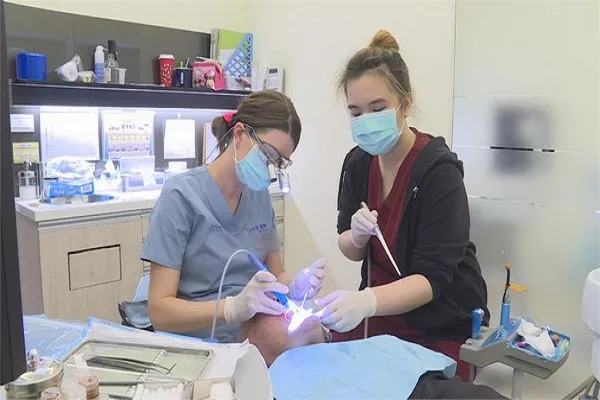The journey to a healthier, more radiant smile often involves dental procedures such as white fillings. While the focus is primarily on the benefits of these aesthetically pleasing restorations, understanding the setting time is crucial for individuals seeking a seamless dental experience. In this article, we will explore the factors influencing the setting time of white fillings and provide insights into what patients can expect during and after the procedure.
The Composition of White Fillings
Composite Resin Material:
White fillings, also known as composite fillings, are made from a composite resin material. This material is a blend of plastic and fine glass particles, designed to match the color of natural teeth.
Light-Curing Process:
Unlike traditional silver amalgam fillings, white fillings are cured or set using a special light. This curing process activates the chemicals in the composite resin, causing it to harden and bond with the tooth.
Setting Time: Key Influencing Factors
Size and Location of the Filling:
The setting time can vary based on the size and location of the filling. Smaller fillings may require less time to set compared to larger restorations.
Type of Curing Light:
The type of curing light used by the dentist plays a significant role in determining the setting time. Advances in dental technology have led to the development of high-intensity lights that can expedite the curing process.
Curing Depth:
The depth of the filling also influences the setting time. Deeper cavities may require a longer curing time to ensure the entire filling is adequately hardened.
Dentist’s Expertise:
The skill and expertise of the dentist in applying and curing the white filling can impact the overall setting time. Experienced dentists often have precise techniques that contribute to efficient and effective outcomes.
Understanding the Setting Process
Application and Shaping:
After the decayed portion of the tooth is removed, the dentist applies the composite resin in layers. Each layer is carefully shaped to match the contours of the tooth, ensuring a natural appearance.
Curing with Light:
Once the composite resin is applied, the dentist uses a curing light to harden each layer. The light activates the photopolymerization process, causing the resin to bond securely to the tooth.
Final Adjustments:
After the layers are set, the dentist makes final adjustments to the filling, ensuring proper alignment and bite. Any excess material is trimmed, and the surface is polished for a smooth finish.
Average Setting Time for White Fillings
Quick Curing Times:
White fillings are known for their relatively quick curing times. The average setting time under the curing light ranges from 30 seconds to a few minutes per layer.
Immediate Use:
Unlike some traditional fillings that may require additional time to set before patients can eat or drink, white fillings allow for immediate use of the restored tooth.
Post-Filling Care and Considerations
Sensitivity:
Some individuals may experience temporary sensitivity after getting a white filling. This is normal and usually subsides within a few days.
Maintaining Oral Hygiene:
Proper oral hygiene practices, including regular brushing and flossing, are crucial after getting a white filling. This helps prevent future decay and ensures the longevity of the restoration.
Conclusion
Navigating the setting time of white fillings provides patients with valuable insights into what to expect during and after the dental procedure. As a fusion of art and science, the application and curing of composite resin require precision and expertise. Understanding the factors that influence setting time, along with post-filling care considerations, empowers individuals to make informed decisions about their oral health. White fillings not only offer a natural-looking solution but also boast quick setting times, allowing patients to resume their daily activities with confidence and a brighter, restored smile.
How do you prevent gingivitis?
What happens if gingivitis is not treated?
What to do if I have gingivitis?
































